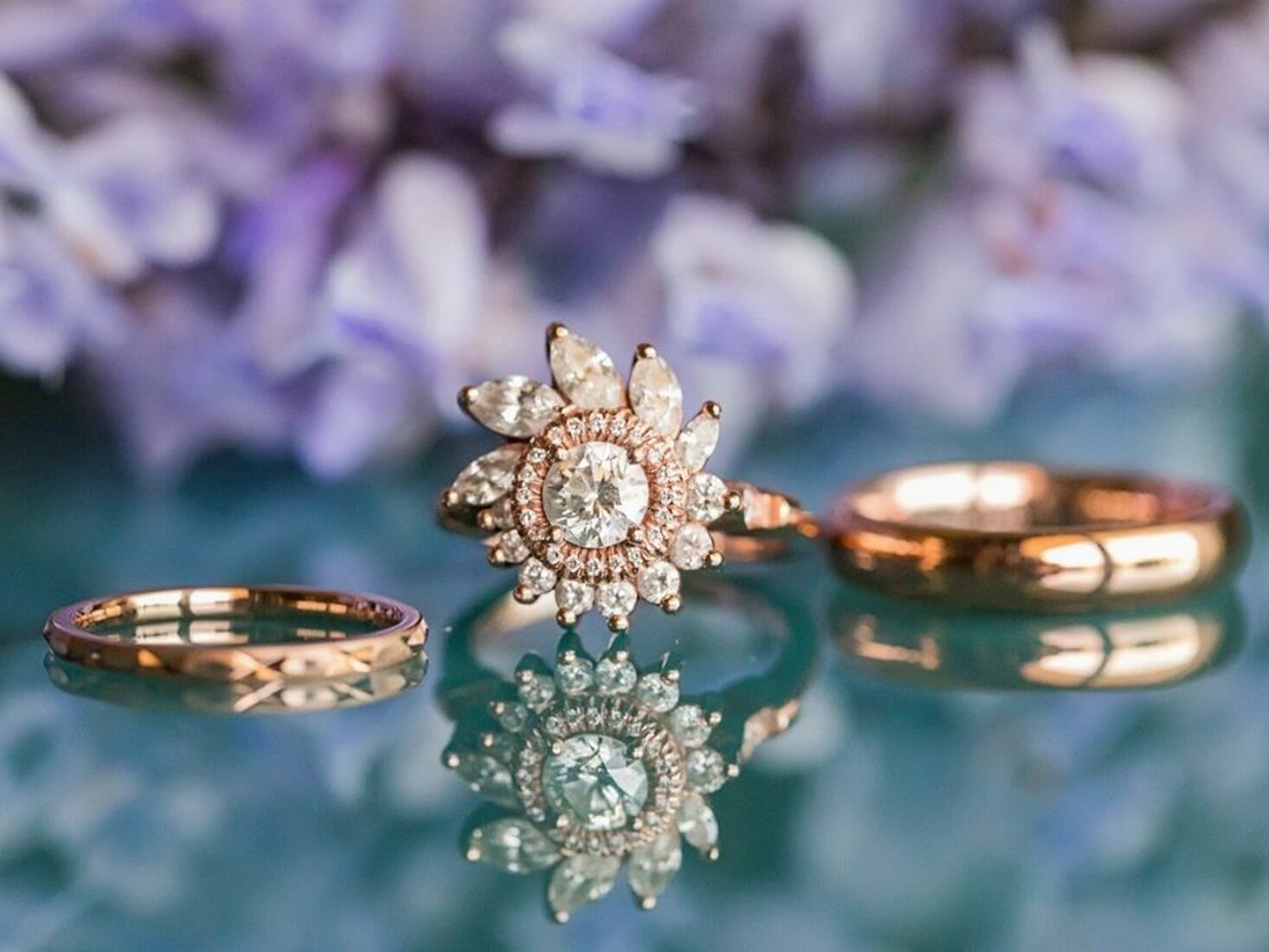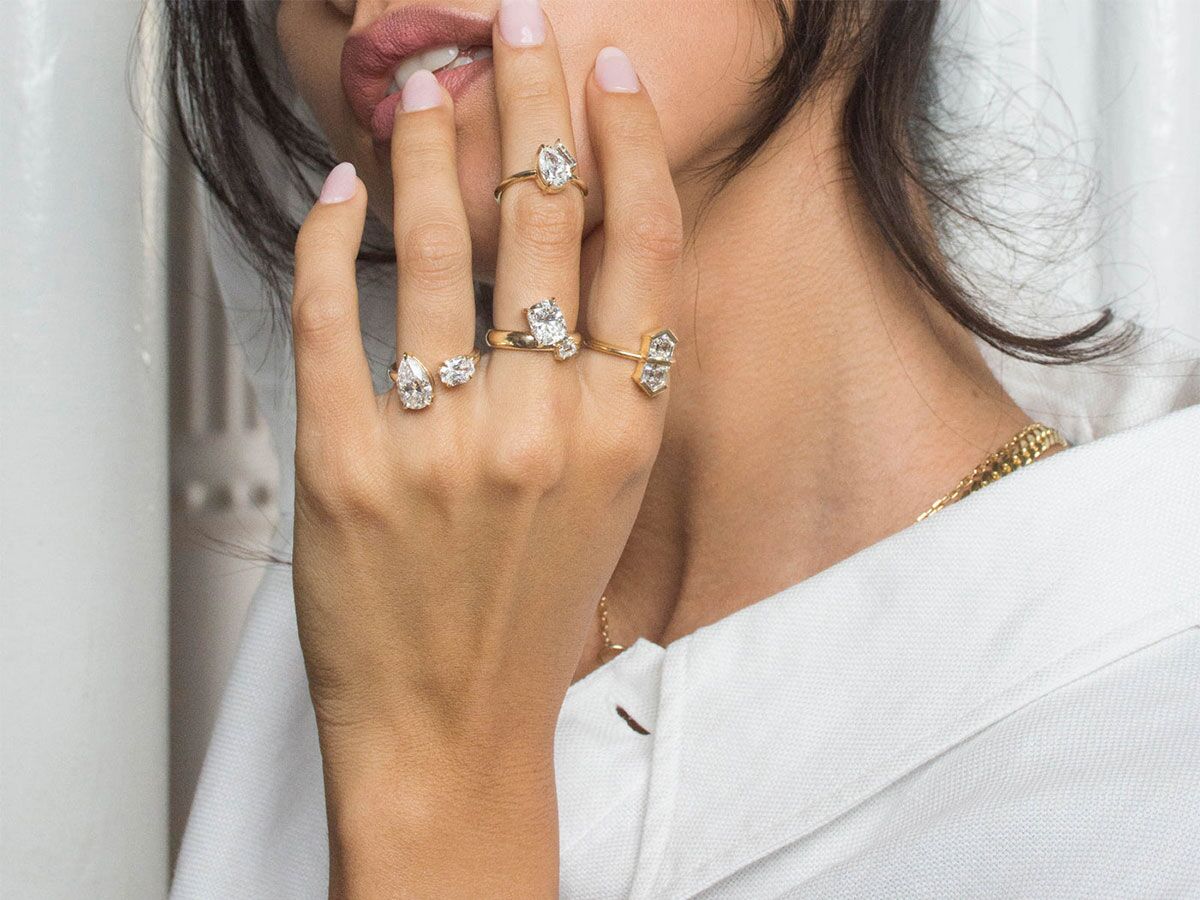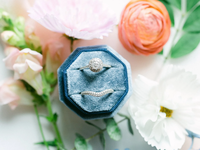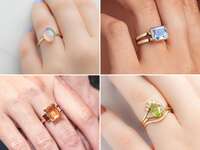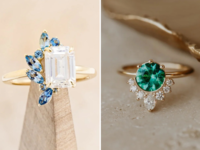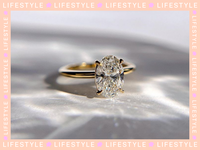A Comprehensive Guide to the Most Popular Gemstone Colors
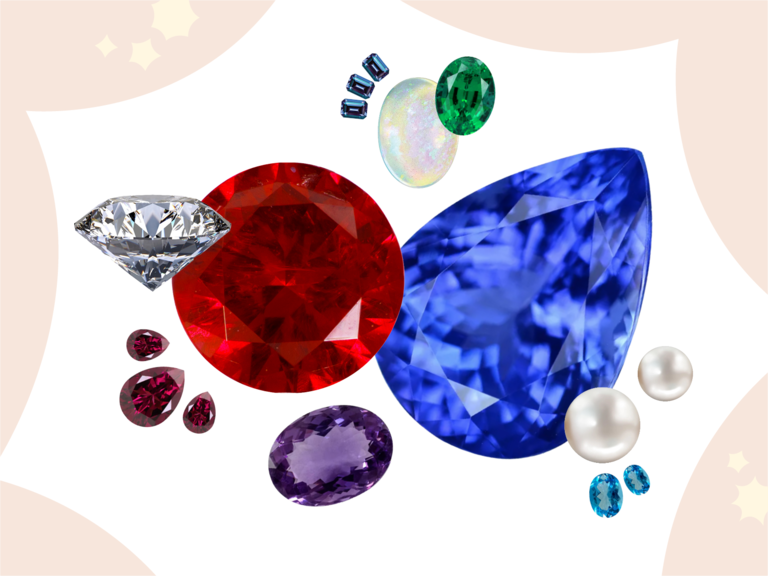
Fact: Engagement rings don't always have to include diamonds. While data from The Knot 2024 Jewelry & Engagement Study indicates that diamonds are the most common engagement ring center stone (accounting for 83% of all designs in the US), that means 17% of people opted for something else. If you're looking for something completely unique, a colored gemstone might be the right pick.
Regardless of what you perceive as "traditional," your engagement ring should be a piece of jewelry that embodies your personal style—especially because you'll wear it every day for the rest of your life. "Most people immediately think of a diamond for the center stone of an engagement ring because that's what they have always known or seen," says jeweler Stephanie Gottlieb, adding that your design can reflect your love of color if that's more aligned with your vibe. "Mixing color into your jewelry wardrobe is the perfect way to express your personality and add a pop of fun."
From fiery red rubies to luxe green emeralds and icy blue sapphires, there are so many colored gems that can serve as engagement ring center stones. We've created a comprehensive gemstone chart that breaks down the most popular colors, their historical meaning, and durability details to help you find the right colored gemstone for your engagement ring.
Colored gemstones in this guide:
- Alexandrite: Red, Green, Blue
- Amethyst: Purple
- Aquamarine: Blue
- Diamond: Colorless or Naturally Colored
- Emerald: Green
- Garnet: Red
- Moissanite: Colorless
- Morganite: Pink
- Opal: Iridescent White
- Pearl: Milky White
- Ruby: Red
- Sapphire: Blue, Green, Red, Pink, Purple, Yellow
- Tanzanite: Blue, Purple
- Topaz: Yellow, Blue, Green, Orange, Red, Purple
Alexandrite: Red, Green, Blue
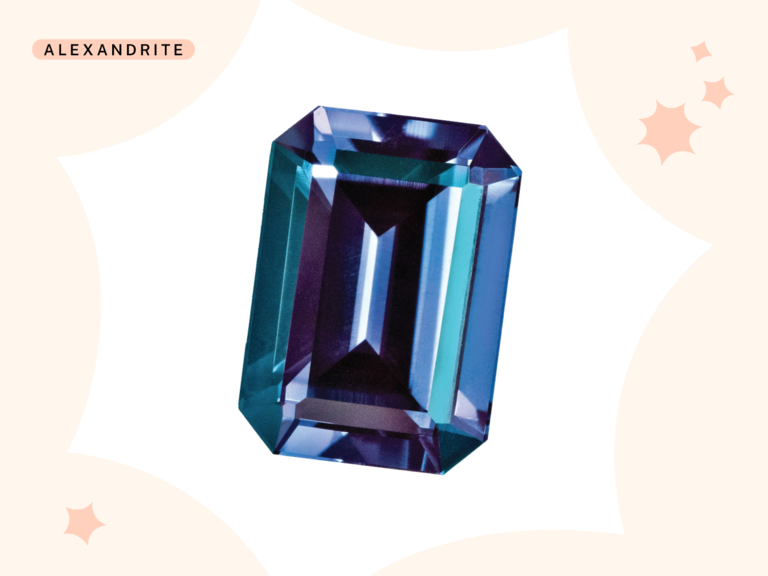
Alexandrite is a variety of the mineral chrysoberyl. Because it was discovered in a Russian mountain range, it was named after Czar Alexander II, the heir to the throne at the time. Alexandrite's color can range from deep purple to dark blue with green tints, but it's most often found in shades of blue-green. The birthstone for January, alexandrite is the gemstone of luck and prosperity. It also represents the balance between the physical and spiritual realms and can bring you into the balance of who you are.
This colored gemstone is an 8.5 on the Mohs hardness scale, which is a system used to classify a gem's resistance to scratching. When it comes to jewelry, a stone with a higher number is generally safer for daily wear as it'll be less prone to chips or damage. Generally speaking, experts recommend opting for a colored gemstone with a rate of 7 or higher for engagement rings.
Amethyst: Purple
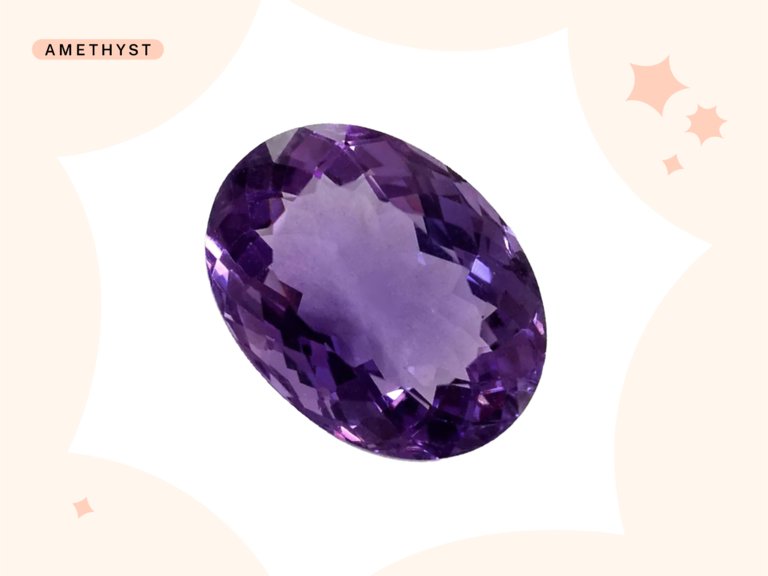
Next on our list of different colored gemstones is amethyst, which is a purple variety of quartz. According to The Knot 2024 Jewelry & Engagement Study, 3% of precious gem engagement rings include amethyst. This colored gem is available in a variety of purple shades, from light lilac to deep purple, or sometimes even red, blue or green.
The name "amethyst" comes from Ancient Greek, and it's loosely derived from the word "intoxicate." According to folklore, wearing amethyst gems and drinking from amethyst cups could protect from intoxication. Known as February's birthstone, amethyst is a 7 on the Mohs hardness scale, making it a safe choice for an alternative engagement ring gemstone.
Aquamarine: Blue
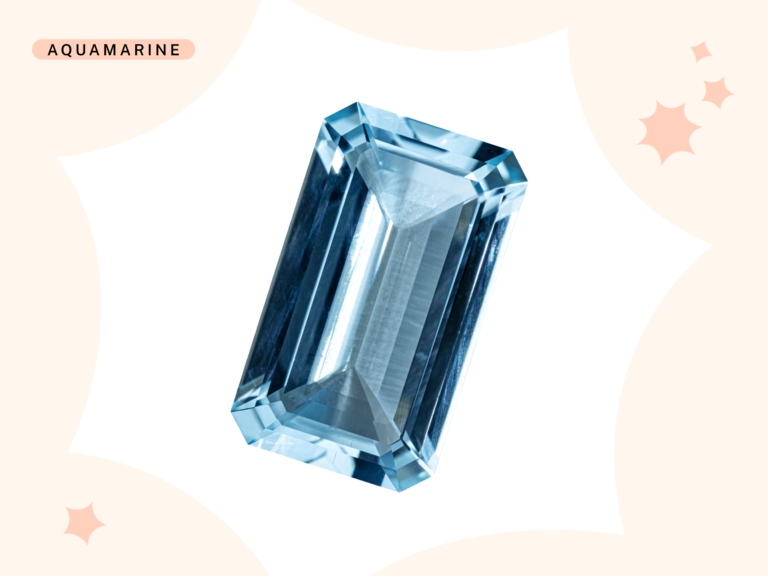
If you have a hunch that aquamarines have a greenish-blue hue, you're correct. As a variety of the gem beryl, this gemstone color has a clear connection to water and the ocean—and now, Meghan Markle, who occasionally wears a nearly 50-carat emerald-cut aquamarine ring that belonged to Princess Diana. (You might recall that exact ring made an appearance in the Duchess of Sussex's wedding reception ensemble.)
Aquamarine gems come in a range of blue-green hues, from very light blue to pale green. This gem can also be color-treated to have a dark blue appearance. Given its light, playful vibe, aquamarine (which is March's birthstone) is associated as a symbol of youth and happiness. It was also known as the "mermaid's stone," as early sailors believed the gem was blessed by Neptune and provided fortune and protection. This colored gem, which makes up 2% of all engagement rings according to our data, falls between 7.5 and 8 on the Mohs hardness scale, making it a suitable choice for a gemstone engagement ring.
Diamond: Colorless or Naturally Colored

Generally speaking, the diamonds we associate with engagement rings are flawless, sparkly and white. But, believe it or not, the natural color range of diamonds spans from colorless to pale yellow, and rarer specimens can include blue, green, pink, and red.
Diamonds symbolize love, strength, commitment, and purity, due in large part to their long association with marriage proposals. Given their rarity, naturally colored diamonds are incredibly special and valuable. A few celebrities have rocked colored diamond engagement rings over the years, from Blake Lively (who wears a pink oval) to Jennifer Lopez (who most recently had a green radiant-cut diamond). Since diamonds are the hardest known substance on the planet, they have a perfect 10 rating on the Mohs hardness scale.
Emerald: Green
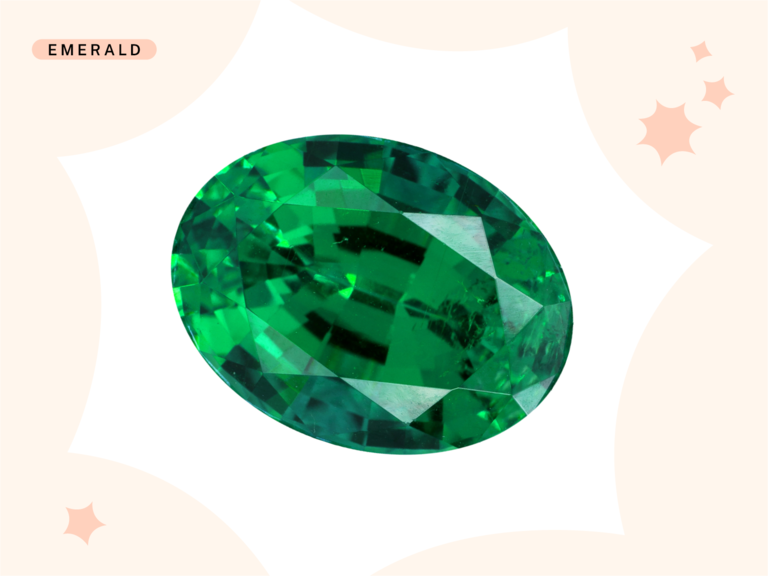
As one of the most beloved colored gemstones, emeralds are a timeless crowd-pleaser, as evidenced by our survey: they make up 7% of precious gem engagement rings. A variety of the mineral beryl, emeralds are so renowned they're considered the standard for green gemstones.
Even if you aren't an expert on gemstone colors, you probably know that this variety is most closely associated with a vibrant green hue. That said, emeralds can also be found in varieties that range from yellow-green to blue-green. Throughout history, this precious gem—which is the birthstone for May—has been a symbol of truth and love. It's also known for offering healing powers and protection.
Emeralds are ranked 7.5-8 on the Mohs scale; however, because this gemstone often has inclusions visible to the naked eye, they're more prone to daily wear and tear. If you're thinking of buying an emerald engagement ring, you'll want to be sure the design has a supportive, low setting to avoid chips or scratches.
Garnet: Red
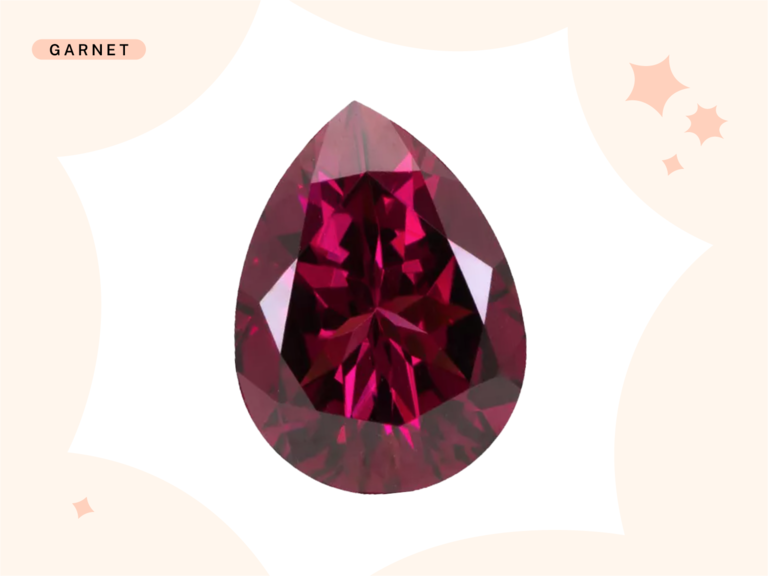
Garnets are generally known to be red gemstones. This colorful rock is a silicate mineral with a gorgeous, glass-like luster. Although the name translates to "dark red," garnets can be found in a variety of gemstone colors, ranging from dark red to blue.
It's said that the name for garnets was inspired by the rich red hue of pomegranates. January's birthstone tends to fall between 6.5 and 7 on the Mohs hardness scale, so proceed with caution when it comes to this jewelry variety. If you opt for a garnet engagement ring, make sure it has a strong, protective setting that sits lower on your hand, like a bezel or a halo.
Moissanite: Colorless

Composed of silicon carbide and often billed as a diamond alternative, moissanite has risen alongside lab-grown diamonds as a more budget-friendly option, particularly for those seeking larger center stones. In fact, our data found that 24% of non-diamond engagement rings were made of moissanite, making this the most popular precious gem alternative.
While most consumers seek out moissanite as an alternative to a clear diamond, the stone is also available in unique shades of grey and teal. Moissanite is nearly as hard as a diamond and clocks in at 9.25 on the Mohs scale. One of its most defining characteristics, though, is its fire. Because moissanite has a higher refractive index than diamonds, this gemstone has a brighter and more colorful sparkle.
Morganite: Pink

Pink lovers will have a soft spot for morganite engagement rings thanks to their warm, rosy hue. As the rarest beryl variety, it's also a trendy alternative engagement ring center stone because it's still generally more budget-friendly than a diamond. Our survey data found that 3% of precious gem engagement rings are morganite.
The stone, which is named after financier J.P. Morgan, is believed to be a symbol of divine love and comes in a range of light, peachy-pink tones. This romantic colored gemstone falls between 7.5 to 8 on the Mohs scale, which means it's durable enough for daily wear.
Opal: Iridescent White

There's something inherently captivating about this celestial stone, which accounts for 3% of precious gem engagement rings. When it comes to jewelry, most opals are cut and polished to create a cabochon, which is a gem that's completely smoothed and polished without internal facets.
In the Middle Ages, opals were believed to bring good luck to the wearer because they could include every shade of the color spectrum. While the most common styles have a milky, multicolor blue-gray finish, they can also come in almost any shade, from yellow, brown, gray, or onyx. So, if you're looking for jewelry that undergoes color change, you might love opal given its ability to appear in different shades through various angles and lighting.
Opals fall between 5.5 and 6.5 on the Mohs scale, which is an important consideration to keep in mind when looking for a colored engagement ring. Because it's a softer gemstone, look for a design with a protective setting and avoid wearing it for activities that heavily involve your hands.
Pearl: Milky White

While you may not associate pearls with engagement rings, actress Emma Stone set a trend in motion when she revealed her dainty white pearl and diamond ring to the world in 2019. Historically, pearls have been used as a symbol of love and good fortune. This elegant jewel spans the entire color spectrum, with varieties ranging from white to jet black.
One thing to note is that pearls rank 2.5 on the Mohs hardness scale, which is why you generally see them in necklace and earring form. While most jewelers might recommend you steer clear of this as a center stone, our data finds that pearls do make up 1% of precious gem engagement rings. If this is your dream style, prioritize proper engagement ring care to ensure its safety and longevity.
Ruby: Red
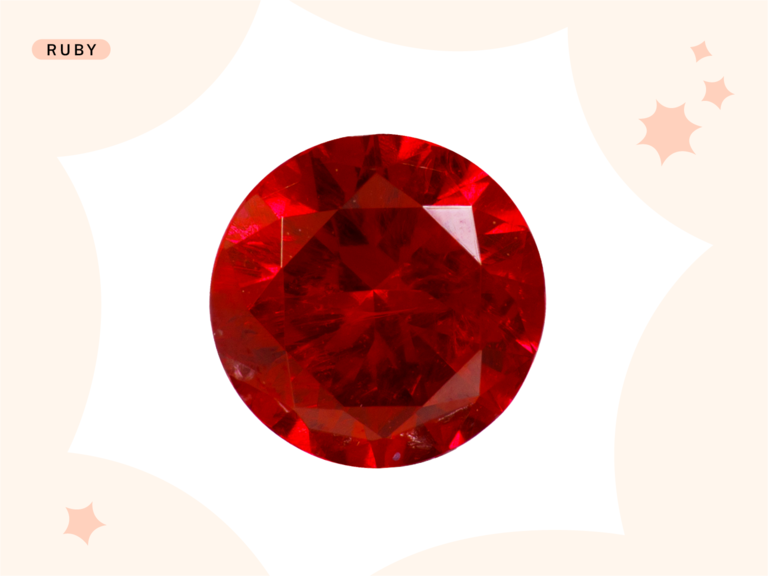
Even if most of these gemstone colors are new to you, you'll probably be able to identify a ruby. This deep, blood-red gemstone is a jewelry staple. As a variety of the mineral corundum, it's a great diamond alternative. Rubies make up 3% of precious gem engagement rings, according to our data. In terms of celebrity engagement rings, both Victoria Beckham and Eva Longoria received large rubies from their husbands.
The word "ruby" is from the Latin word "ruber," which translates to red. It's for this reason that rubies are found in the red color spectrum, from dark pink to deep purple. Since red is the color of love, this precious stone is understood to represent purity and passion. Rubies are given a 9 on the Mohs hardness scale, making them almost as hard as diamonds, and thus very suitable for engagement rings.
Sapphire: Blue, Green, Red, Pink, Purple, Yellow

As one of the most well-known precious gemstones, sapphire is a beloved choice for an alternative engagement ring. Per our data, colored sapphires make up 21% of all precious gemstone engagement rings (that's up 6% since 2022, indicating a rise in popularity). One reason sapphires might be so beloved is because of their history in pop culture. Royal wearers like Princess Diana and Kate Middleton made blue sapphires mainstream.
Sapphires belong to the corundum family, and they come in just about every gemstone color, including pink, orange, yellow, purple, and black. They even come in colorless or white gemstones, making them an alternative to a traditional diamond. (Our study found that white sapphires make up 2% of this subset of engagement rings.) Different sapphire varieties also have various finishes, like a star sapphire. This form includes intersecting needle-like inclusions in a star pattern on the face of the stone.
Considering they have a 9 rating on the Mohs hardness scale, sapphires are very comparable to the strength of a diamond, making them a great option for a gemstone engagement ring.
Tanzanite: Blue, Purple
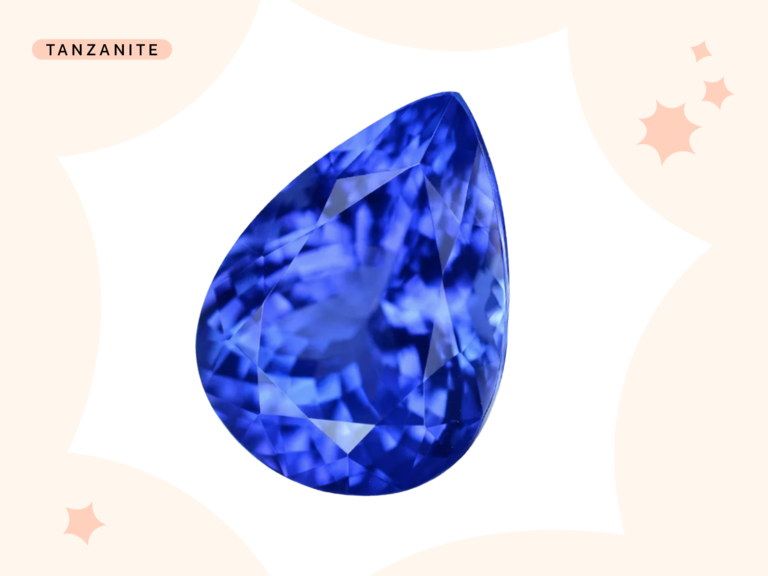
Only found in Tanzania near Mount Kilimanjaro, tanzanite is a blue and purple variety of the mineral zoisite. Not to be confused with sapphire, tanzanite also comes in a deep blue hue. The rare gemstone can also be found in shades of purple and red.
While its true meanings vary, tanzanite gems—which are said to be rarer than diamonds—are believed to represent new beginnings and prosperity. It was formally brought to the jewelry market by Tiffany & Co. in 1968. This moody-colored gem is rated 6.5 on the Mohs hardness scale. Since it's a softer gem, look for tanzanite engagement rings with low, protective settings.
Topaz: Yellow, Blue, Green, Orange, Red, Purple
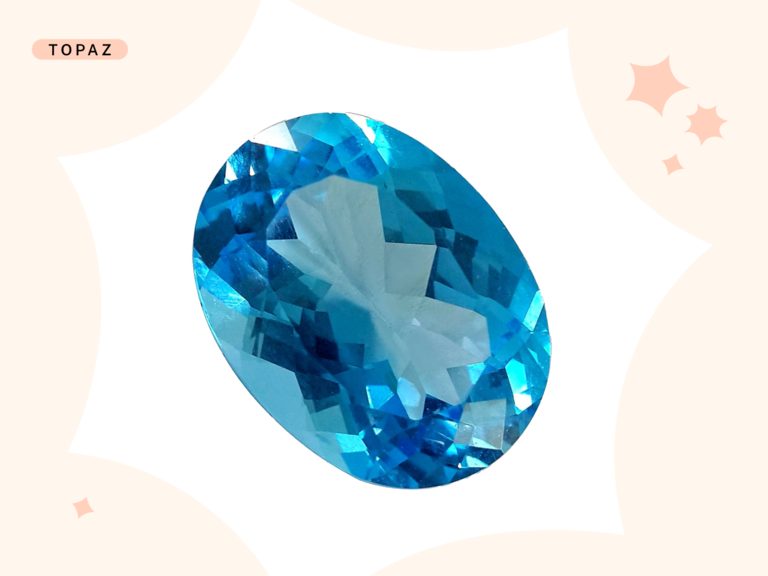
Known for its earthy, brownish tint, topaz is a silicate mineral. Although common topaz is colorless, it also comes in a natural pale yellow hue. Topaz can be treated to come in shades of blue, green, yellow, orange, red, pink, and purple. A special variation, known as imperial topaz, comes in a unique golden-red color.
This colorful gemstone has long been associated with fiery energy and is thought to represent love, passion and purpose. While any of its shades can make for a beautiful engagement ring, our data found that blue topaz makes up 2% of precious gem center stones. November's birthstone has an 8 rating on the Mohs hardness scale, making it suitable for daily wear.

